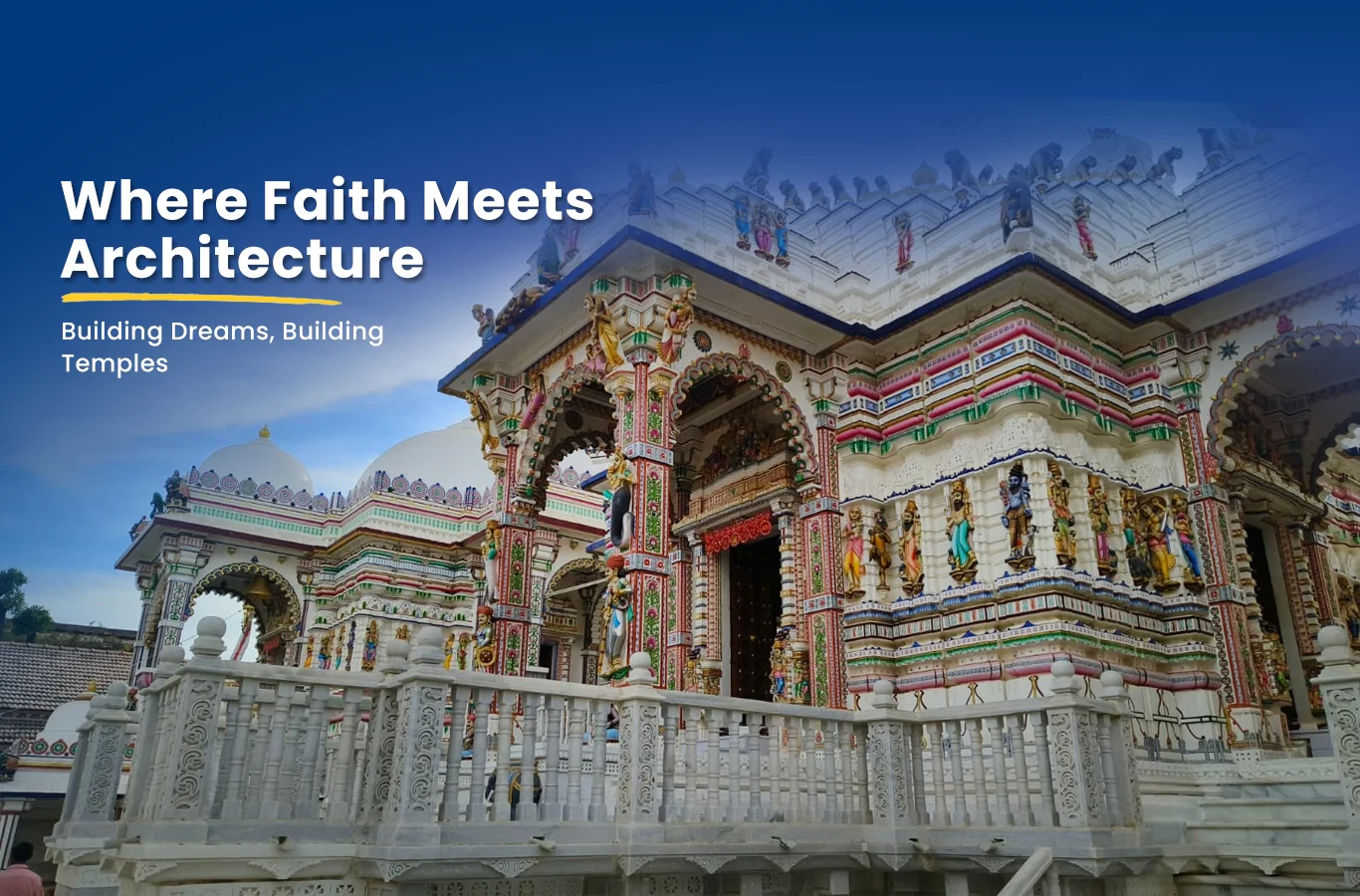Sustainability is not a new concept in temple architecture, especially in Jain temples, which have long adhered to principles of environmental harmony. Rooted in Jainism’s core values of non-violence and minimalism, these structures emphasize eco-friendly practices, resource efficiency, and longevity. Modern Temple Architects in India, including the skilled Jain Temple Sompura community, have continued to uphold these principles while integrating contemporary sustainability innovations. Temple Construction Services in Rajasthan have also played a key role in advancing sustainable practices in temple construction.
The Intersection of Jain Philosophy and Sustainable Architecture
Non-Violence and Environmental Responsibility
Jainism’s foundational tenet of ahimsa (non-violence) extends to environmental stewardship. Jain temples reflect this philosophy by using materials, designs, and construction methods that minimize environmental impact.
- Natural Materials: Stone, marble, and wood—materials that are both durable and eco-friendly—are staples in Jain temple construction.
- Conservation-Oriented Design: Temples are designed to work harmoniously with their natural surroundings, ensuring minimal disruption to ecosystems.
Role of Temple Architects
Temple Architects in India, particularly the Jain Temple Sompura community, have traditionally embraced sustainable practices by designing temples that balance spiritual and environmental needs.
Sustainable Practices in Ancient Jain Temple Construction
1. Locally Sourced Materials
Jain temples have historically utilized materials readily available in the region, reducing transportation costs and environmental impact.
- Example: The Ranakpur Jain Temple in Rajasthan was constructed using locally quarried marble, a practice that remains common today.
- Impact: Locally sourced materials enhance the temple’s durability while minimizing its carbon footprint.
2. Passive Cooling and Ventilation
Ancient Jain temples were designed to maintain a comfortable indoor environment without mechanical systems:
- Thick Walls and Domes: These structures provide insulation, keeping interiors cool in summer and warm in winter.
- Natural Ventilation: Openings in domes and strategically placed windows allow for air circulation and natural lighting.
3. Durability and Timelessness
Sustainability in Jain temples is also achieved through their incredible longevity. Temples like the Dilwara Temples in Mount Abu, built over 800 years ago, continue to stand strong due to their robust construction techniques.
Modern Innovations in Sustainable Temple Construction
1. Eco-Friendly Materials
While maintaining traditional aesthetics, modern Temple Construction Services in Rajasthan have adopted eco-friendly construction materials such as:
- Recycled stone and marble for floors and walls.
- Lime mortar as a substitute for cement, reducing carbon emissions.
- Sustainable wood certified by environmental organizations for furniture and decorative elements.
2. Water Conservation Systems
Water scarcity is a pressing issue, especially in regions like Rajasthan. Modern Jain temples incorporate water-saving technologies, including:
- Rainwater Harvesting: Systems that collect and store rainwater for temple use.
- Water Recycling: Treating greywater for landscaping and cleaning purposes.
3. Energy Efficiency
Modern Jain temples embrace renewable energy solutions to reduce dependency on conventional energy sources:
- Solar Panels: Many temples in Rajasthan now have solar installations to power lighting and ventilation systems.
- LED Lighting: Energy-efficient lighting solutions that reduce electricity consumption.
Contributions of Jain Temple Sompura Architects
Balancing Tradition and Modernity
The Jain Temple Sompura community continues to uphold traditional values while integrating sustainable practices into their designs. Their contributions include:
- Designing for Durability: Ensuring that temples can withstand environmental challenges while requiring minimal maintenance.
- Restoring Ancient Temples Sustainably: Using traditional materials and techniques to preserve authenticity during restoration projects.
Signature Projects
- Dilwara Temples Renovation: The Sompura architects have been instrumental in maintaining these ancient structures using eco-friendly restoration methods.
- Contemporary Jain Temples: Incorporating features like solar energy and recycled materials while preserving the spiritual essence of traditional designs.
Temple Construction Services in Rajasthan and Sustainability
Leading the Way in Eco-Friendly Practices
Rajasthan, with its arid climate and historical significance in temple construction, has become a hub for sustainable building practices. Temple Construction Services in Rajasthan excel in combining traditional craftsmanship with modern green technologies.
Examples of Sustainability in Practice
- Ranakpur Jain Temple: Modern restoration projects have incorporated water conservation systems and sustainable landscaping.
- New Temple Projects: Several Jain temples in Rajasthan are being constructed with sustainable materials and renewable energy systems.
Challenges in Implementing Sustainability
1. Balancing Costs and Eco-Friendly Practices
Sustainable construction materials and technologies can be more expensive initially, posing challenges for smaller temple projects. However, their long-term benefits in durability and energy efficiency often outweigh the upfront costs.
2. Preserving Traditional Techniques
While modern tools and materials improve efficiency, there is a risk of losing the traditional skills and methods that define Jain temple architecture. Efforts to train artisans and incorporate traditional techniques are essential for maintaining authenticity.
3. Environmental Constraints
Regions like Rajasthan face unique challenges such as water scarcity and extreme weather, making it crucial for architects and builders to adapt sustainable solutions.
The Future of Sustainable Jain Temple Construction
Innovations on the Horizon
The future of Jain temple construction lies in adopting cutting-edge technologies while preserving traditional values. Potential innovations include:
- Advanced water-saving systems to address scarcity in arid regions.
- Smart energy management systems to optimize solar power usage.
- Sustainable landscaping with native plants to reduce water requirements.
Role of Stakeholders
- Temple Architects in India: Leading the integration of traditional and sustainable practices.
- Jain Temple Sompura Community: Continuing their legacy of environmentally conscious temple design.
- Temple Construction Service in Rajasthan: Implementing innovative solutions tailored to regional challenges.
Conclusion
Sustainability has always been an integral part of Jain temple architecture, rooted in the religion’s philosophy of harmony with nature. From the ancient techniques of passive cooling and local material usage to modern innovations like solar energy and water conservation systems, Jain temples continue to set an example in sustainable construction.
The contributions of Temple Architect in India, the expertise of the Jain Temple Sompura community, and the advancements by Temple Construction Services in Rajasthan ensure that these temples remain symbols of environmental stewardship and spiritual sanctity. As sustainability becomes increasingly crucial, Jain temples will continue to inspire a harmonious balance between tradition, innovation, and environmental care.

